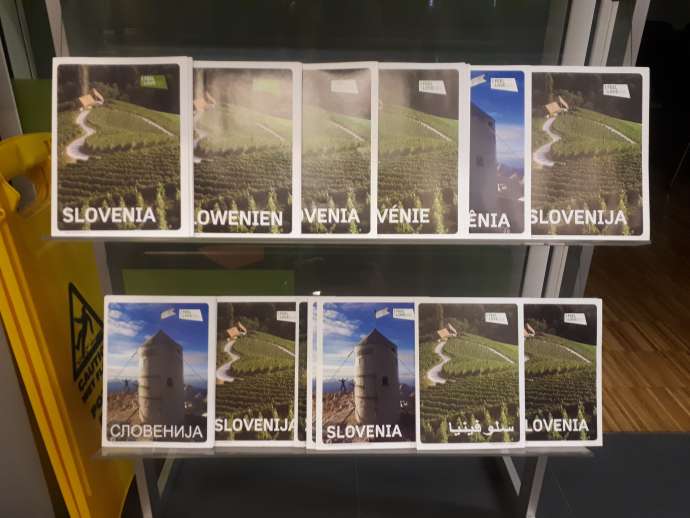STA, 19 December 2018 - Slovenia's tourism industry has had another record year, with tourist nights expected to top 15.2 million by the end of 2018, up from last year's 12.6 million. Still, some challenges remain to be addressed, including the shortage of staff and low pay as well as the consolidation of state-owned tourism companies.
Slovenia now a trendy destination
Slovenia has regularly made it to various lists of destinations worth exploring which are compiled by specialist media abroad, and the country's promotional campaigns have regularly won awards at major international tourism events.
"Slovenia is not only a recognisable destination, it is now a trendy destination," is how Slovenian Tourist Board (STO) director Maja Pak has recently summed the country's position in global tourism.
Tourism revenue, a key indicator of tourism performance, is growing, rising by 11.6% to EUR 2.12m in the first nine months of the year.
While the 2017 tourist nights figures were exceeded already in October, Slovenia expects to record over 5.6 million tourist arrivals in 2018, up from 4.95 million last year.
The number of foreign guests is to reach 4.2 million by the end of the year, and they are expected to generate almost 11 million tourist nights, STO data shows.
The growth is thus considerably more robust that in the EU or in the world.
Hotels in the black, differences in ownership
Following the crisis, hotels are back in the black, yet Economy Minister Zdravko Počivalšek, whose ministry is in charge of tourism, is not entirely happy yet.
He believes the relatively low value added should be blamed on the fact that as many as 40% of hotels are in state ownership.
He thus insists on their restructuring as envisaged in the 2017-2021 strategy on sustainable development of Slovenian tourism.
Once they are brought under one roof, preferably under Slovenian Sovereign Holding, they should be consolidated to secure a higher value added and then gradually sold.
He believes there is room for no more than two to three major groups in the sector, and is confident the incumbent government will complete the restructuring process.
However, Počivalšek has admitted on several occasions that this will not be easy since not all stakeholders have the same view on the issue.
That even state stakeholders have different interests in the sector has been recently proven by the fact that several different state companies and funds bid for six hotels on the coast which are being sold by Istrabenz Turizem.
To achieve a higher value added, Slovenian tourism also needs to develop new innovative products, which implies investment into infrastructure.
To encourage the investment cycle, the ministry and SID Bank have launched a EUR 160m loan scheme for new accommodation facilities. Počivalšek has said there is much interest.
Higher tourist tax, further legislative changes in the making
By passing changes to the law on encouraging tourism development, the government enabled municipalities to raise tourist fee and introduce a new tax to secure more funds for tourism promotion.
The tourist free was capped at EUR 2.5 per person a night, but is still set by individual municipalities.
The new tax meanwhile amounts to 25% of the tourist fee and will be charged as of 2019 as a a new source of STO funds, bringing it an estimated EUR 4.7m a year.
Many municipalities have opted to raise the tourist fee, with several popular destinations such as Ljubljana, Piran and Bled raising it to the maximum.
The ministry has assessed the measure will annually bring all Slovenian municipalities additional EUR 6.9m.
For 2019, the ministry is planning further legislative changes to relax the rules on the hospitality sector and mountain guides.
New rules will also be introduced governing tourist accommodation facilities which introduce internationally-comparable Hotelstars standards.
Owners of accommodation facilities have until 1 April to adjust to a unified set of criteria to classify accommodation facilities.
New collective bargaining agreement, pay still low
Staff is one of the most burning issues in hospitality and tourism, with employers having a hard time finding quality staff in Slovenia or in the broader region.
This is mainly due to difficult working conditions and low pay.
A new collective bargaining agreement was signed in August, bringing higher wages for workers receiving the lowest pay, a higher annual holiday allowance of EUR 1,000 and changes to overtime work.
Nevertheless, hospitality and tourism trade unions have already announced their plan to push for fresh pay talks.
Feel Slovenia your way
This year was one of the most intensive and successful years for Slovenia in terms of marketing as well. The STO continued with its digital campaign Slovenia - Make New Memories this time on 17 markets, including in the US and Canada for the first time.
Its main promotional slogan "Slovenia - Green. Active. Healthy." will be replaced with "I Feel Slovenia. My Way." in 2019.
However, just like in 2018, culture will remain in the focus of the STO's promotional campaigns, to be replaced by gastronomy in 2020 and 2021.







